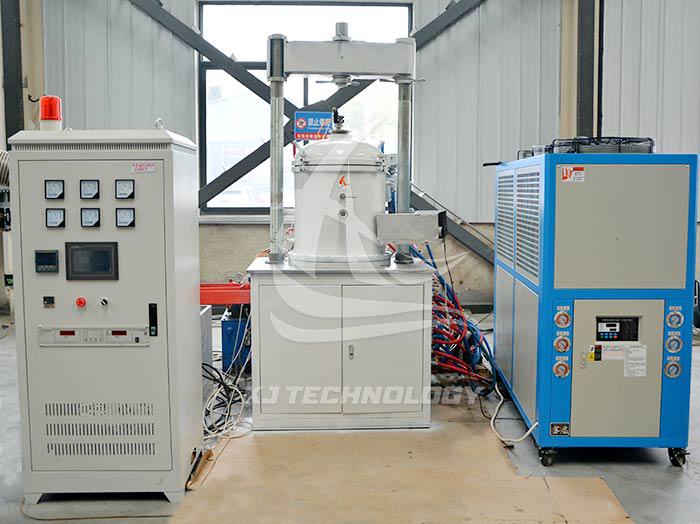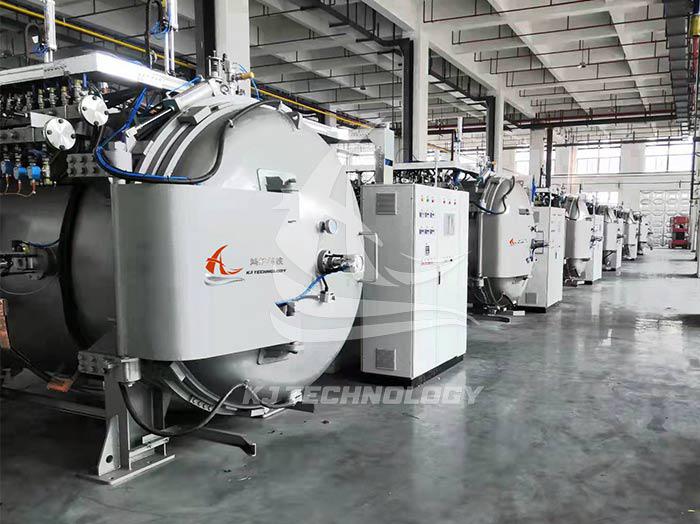Precautions for selecting electric heating vacuum annealing furnace
 04-17-2025 Author: KJ technology
04-17-2025 Author: KJ technology
When selecting an electric heating vacuum annealing furnace, the following key points should be noted:+
Heating temperature requirement:
Temperature range: Determine the required heating temperature range based on the chemical composition of the material to be processed and the requirements of the heat treatment process. The heating temperature of a vacuum annealing furnace is generally between 1600 and 2400 degrees, and it is necessary to ensure that the selected equipment can meet the highest temperature required by the process.
Temperature accuracy and uniformity: Considering the accuracy of temperature control and the uniformity of temperature inside the furnace, this directly affects the heat treatment effect. High precision and uniform temperature distribution help improve the consistency of material properties.
Vacuum requirement:
Vacuum system selection: Choose the appropriate vacuum system according to the process requirements. There are three types of vacuum systems available for vacuum annealing furnaces: low, medium, and high. Common vacuum components include rotary vane pumps, Roots pumps, molecular pumps, diffusion pumps, etc.
Vacuum margin: On the basis of meeting the equilibrium decomposition pressure of metal oxides and carbides, a certain vacuum margin is set to avoid excessive vacuum, which may cause alloy element volatilization and increase equipment configuration costs.
Cooling method:
Cooling method selection: The cooling methods for vacuum annealing furnaces mainly include oil cooling and gas cooling. Air cooling has almost no pollution to heat-treated parts, and the surface of the parts is clean after treatment; Oil cooling may cause micro carburizing problems. The appropriate cooling method should be selected according to the material type and heat treatment process requirements.
Cooling rate control: Considering the influence of cooling rate on material properties, the cooling rate of air-cooled cooling is mainly affected by factors such as air pressure, flow rate, and airflow form.
Heating element and control system:
Heating element selection: Choose the appropriate heating element form and material according to the process requirements, such as resistance wire, silicon carbon rod, silicon molybdenum rod, etc.
Reliability of control system: The control system is the core part of the vacuum annealing furnace, ensuring its reliability and completeness. It should have functions such as monitoring, fault display, and recording to ensure the stability and safety of the process.
Furnace structure and dimensions:
Furnace structure: Choose a suitable furnace structure based on production needs and space constraints, such as vertical or horizontal.
Furnace cavity size: Determine the furnace cavity size based on the size and batch size of the material to be processed, ensuring that the equipment can meet production needs.
Manufacturer reputation and after-sales service:
Manufacturer selection: Choose manufacturers with good reputation and rich experience to ensure reliable equipment quality and performance.
After sales service: Consider the manufacturer's after-sales service capabilities, including equipment installation and commissioning, technical training, maintenance, and other aspects.
Other special requirements:
Atmosphere control: If the process requires a specific atmosphere environment, a vacuum annealing furnace equipped with an atmosphere control system should be selected.
Remote operation and monitoring: Consider whether remote operation and monitoring functions are needed based on production needs.








